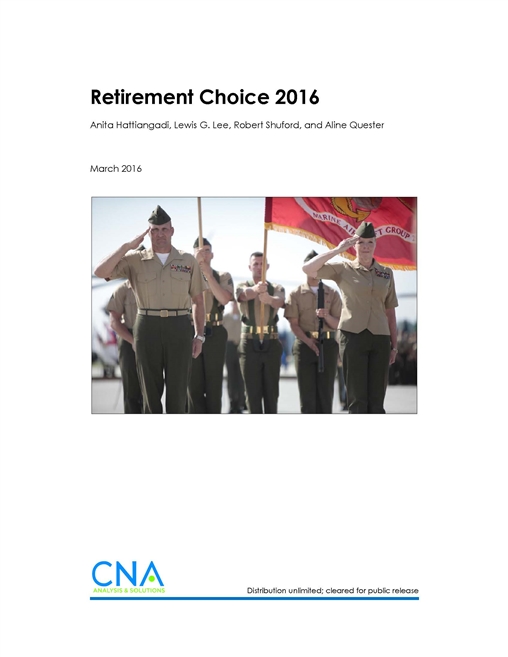Although Congress changed the military retirement system effective January 1, 2018, military personnel who entered service after July 31, 1986, and before January 1, 2018, who are eligible and intend to serve for 20 years must choose between two retirement plans at their 15th year of service.1 Once the final selection is made, the choice is irrevocable. The two choices are:
High-3 retirement plan: Retirement pay is based on the highest average basic pay for 36 months of a servicemember’s career. These are usually the last 3 years.
REDUX retirement plan plus a $30,000 bonus paid at the 15th year of service: In return for accepting the bonus, REDUX provides smaller retirement checks.
How should Marines, Sailors, Airmen, and Soldiers decide which option to take? The Department of Defense (DOD) has a website that provides information and examples to help servicemembers.2 We have used a different approach that many have found useful in evaluating these retirement choices.3 Here, we update that work for those making the retirement choice in 2016.
We start by describing the $30,000 bonus as an early, partial cash-out of the servicemember’s retirement pension. This $30,000 cash-out will be “paid back” later in the form of reduced retirement checks. By providing information on how much this cash-out will cost in terms of lower future retirement income, we hope that we can help servicemembers to make more informed choices about which plan to select. First, though, we briefly look at the general provisions of military retirement and then focus more specifically on the two plans. Both pension choices have the following features:
- Both provide retirement income as a percentage of the average of the highest
- 36 months of basic pay. There is no risk; the retirement payments are specified by law and are guaranteed by the full faith and credit of the U.S. government.
- Both offer deferred compensation for which no taxes are paid until the retired pay is received.4 Such plans are called tax-sheltered retirement plans.
Both are protected against inflation. High-3 has full inflation protection because it changes yearly with the Consumer Price Index (CPI), whereas REDUX/bonus has less protection (CPI minus 1 percentage point). The value of inflation protection for retirement pay cannot be overemphasized. Most military members will be retired in about 40 years. In 40 years, one can expect prices to increase at least four times, meaning that what costs $1 at military retirement will end up costing $4.5.
To summarize, military pensions are risk-free, tax-sheltered, inflation-adjusted annuities with options for spousal benefits (such as the Survivor Benefit Plan) on the death of the member. Such private pension provisions are very expensive, and only a few companies offer them.
Download reportDistribution unlimited; cleared for public release. Specific authority: N00014-11-D-0323.
Details
- Pages: 26
- Document Number: DRM-2016-U-012997-Final
- Publication Date: 3/1/2016
